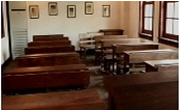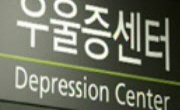이 연구는 기형도 시에 드러나는 헤테로토피아와 정동에 관한 연구로 사회가 규정한 획일화된 장소의 ‘경계’ 너머 현실의 혼종적 장소에서 드러나는 주체의 내면에 대한 탐구이다. 근대...
http://chineseinput.net/에서 pinyin(병음)방식으로 중국어를 변환할 수 있습니다.
변환된 중국어를 복사하여 사용하시면 됩니다.
- 中文 을 입력하시려면 zhongwen을 입력하시고 space를누르시면됩니다.
- 北京 을 입력하시려면 beijing을 입력하시고 space를 누르시면 됩니다.
https://www.riss.kr/link?id=A109627764
-
저자
김지율 (경상국립대학교 인문학연구소)
- 발행기관
- 학술지명
- 권호사항
-
발행연도
2025
-
작성언어
Korean
-
주제어
정동 ; 사이 공간 ; 알레고리 ; 안개 ; 부재 ; 우울 ; 빈 장소들 ; 헤테로토피아 ; affect ; between space ; allegory ; fog ; absence ; depression ; empty places ; heterotopia
-
등재정보
KCI등재
-
자료형태
학술저널
- 발행기관 URL
-
수록면
267-310(44쪽)
- 제공처
-
0
상세조회 -
0
다운로드
부가정보
국문 초록 (Abstract)
기형도의 원체험에서 비롯되는 비가시적이고 폐쇄적인 공간 인식은 ‘절망과 희망의 교차점’으로서 ‘안개’라는 알레고리적 장소를 형상화한다. ‘안개’는 헤테 로크로니아적 시간과 타자들이 부유(浮遊)하는 장소로서 거대 권력과 자본에 의해 획일화된 세계에 대한 저항으로서 이질적인 정동들이 움직이는 장소이다. 그곳은 뿔뿔이 흩어진 개인의 익명적 삶을 지배하며 그 속에서 벌어지는 폭력성 을 노출하는 탈영토화의 장소이다.
또한 유토피아의 부재와 복합적 정동이 혼재하는 ‘사이 공간’으로 거리와 정 류장, 빈방과 같은 장소는 스스로를 응시하고 타인과 관계를 맺음으로써 불안과 우울과 같은 ‘정동’이 야기되는 이소성의 장소이다. 특히 ‘빈 장소’들의 ‘비어있 음’은 주체들의 고통과 회환, 미련과 슬픔 그리고 기다림 등의 혼종적 정동이 결합되고 충돌하는 역동적인 공간으로 개인의 기억뿐 아니라 복잡한 시대 정서 를 구축한다.
이처럼 기형도 시에서 현실의 유토피아로서의 장소들은 출구가 없는 미로처 럼 ‘장소 바깥에 있는 장소’이자 ‘뿌리 내릴 수 없는 장소’로써 무한 반복되는 길 위에 있다. 기억과 환상이 교차하는 ‘자기 은신처’로서의 이러한 장소들에는 대체로 낙관적인 전망보다는 불안이나 우울과 같은 부정적 정동이 부각된다. 어쩌면 그것은 ‘유한’을 사는 인간이 겪는 ‘무한’한 헤맴 속의 감정들로 사라진 것들, 억압된 것들 그리고 추방된 것들이 ‘사이’ 틈을 만들고 작고 연약한 것들의 내면적 장소로 작용하는 ‘공간-정동’의 불가분의 관계를 말해주는 것이다.
이 연구는 기형도 시에 드러나는 헤테로토피아와 정동에 관한 연구로 사회가 규정한 획일화된 장소의 ‘경계’ 너머 현실의 혼종적 장소에서 드러나는 주체의 내면에 대한 탐구이다. 근대화 과정에서 파생되는 개인들의 고독과 소외는 현실 의 혼종적 장소에서 부각되는데 ‘정동’은 근대적 장소들 속에서 사회, 문화적 의미를 다각적으로 접근할 수 있는 중요한 논점이다.
기형도의 원체험에서 비롯되는 비가시적이고 폐쇄적인 공간 인식은 ‘절망과 희망의 교차점’으로서 ‘안개’라는 알레고리적 장소를 형상화한다. ‘안개’는 헤테 로크로니아적 시간과 타자들이 부유(浮遊)하는 장소로서 거대 권력과 자본에 의해 획일화된 세계에 대한 저항으로서 이질적인 정동들이 움직이는 장소이다. 그곳은 뿔뿔이 흩어진 개인의 익명적 삶을 지배하며 그 속에서 벌어지는 폭력성 을 노출하는 탈영토화의 장소이다.
또한 유토피아의 부재와 복합적 정동이 혼재하는 ‘사이 공간’으로 거리와 정 류장, 빈방과 같은 장소는 스스로를 응시하고 타인과 관계를 맺음으로써 불안과 우울과 같은 ‘정동’이 야기되는 이소성의 장소이다. 특히 ‘빈 장소’들의 ‘비어있 음’은 주체들의 고통과 회환, 미련과 슬픔 그리고 기다림 등의 혼종적 정동이 결합되고 충돌하는 역동적인 공간으로 개인의 기억뿐 아니라 복잡한 시대 정서 를 구축한다.
이처럼 기형도 시에서 현실의 유토피아로서의 장소들은 출구가 없는 미로처 럼 ‘장소 바깥에 있는 장소’이자 ‘뿌리 내릴 수 없는 장소’로써 무한 반복되는 길 위에 있다. 기억과 환상이 교차하는 ‘자기 은신처’로서의 이러한 장소들에는 대체로 낙관적인 전망보다는 불안이나 우울과 같은 부정적 정동이 부각된다. 어쩌면 그것은 ‘유한’을 사는 인간이 겪는 ‘무한’한 헤맴 속의 감정들로 사라진 것들, 억압된 것들 그리고 추방된 것들이 ‘사이’ 틈을 만들고 작고 연약한 것들의 내면적 장소로 작용하는 ‘공간-정동’의 불가분의 관계를 말해주는 것이다.
다국어 초록 (Multilingual Abstract)
The invisible and closed spatial perception arising from the original experience of the deformed island forms an allegorical place called ‘fog’ as the ‘intersection of despair and hope’. ‘Fog’ is a place where heterochronic time and others are wealthy, and is a place of de-territorialization in which heterochronic affections move as a resistance to a world uniform to huge power and capital. It dominates the anonymous life of individuals scattered and exposes the violence that occurs in it.
In addition, the “between space”, which mixes the absence of utopia and complex affect, is an ectopic place where “affect” such as anxiety and depression occurs by staring at oneself and making relationships with others. Places such as streets and stops, alleys and empty rooms accumulate daily personal lives, but at the same time, they internalize the world as a place familiar with alienation and isolation, building complex period emotions as well as individual memories.
Like this, the places as the utopia of reality in the deformed city are on an infinite repetitive path as “a place outside the place” and “a place that cannot be rooted out” like a maze with no exit. Places as “self-hidden places” where memories and fantasies intersect are generally highlighted by negative affect such as anxiety and depression rather than optimistic prospects. Perhaps it speaks to the inseparable relationship of “space-affect”, where things that disappeared, things that were suppressed, and things that were exiled created a “between” gap and acted as an inner place of small and vulnerable things.
This study is on heterotopia and affect that are revealed in deformed cities, and it is an exploration of the inner side of the subject that is revealed in a hybrid place in reality beyond the ‘boundary’ of a uniform place defined by society. The ...
This study is on heterotopia and affect that are revealed in deformed cities, and it is an exploration of the inner side of the subject that is revealed in a hybrid place in reality beyond the ‘boundary’ of a uniform place defined by society. The solitude and alienation of individuals derived from modernization are highlighted in a hybrid place in reality, and ‘affect’ is an important issue that allows a multi-faceted approach to social and cultural meanings in modern places.
The invisible and closed spatial perception arising from the original experience of the deformed island forms an allegorical place called ‘fog’ as the ‘intersection of despair and hope’. ‘Fog’ is a place where heterochronic time and others are wealthy, and is a place of de-territorialization in which heterochronic affections move as a resistance to a world uniform to huge power and capital. It dominates the anonymous life of individuals scattered and exposes the violence that occurs in it.
In addition, the “between space”, which mixes the absence of utopia and complex affect, is an ectopic place where “affect” such as anxiety and depression occurs by staring at oneself and making relationships with others. Places such as streets and stops, alleys and empty rooms accumulate daily personal lives, but at the same time, they internalize the world as a place familiar with alienation and isolation, building complex period emotions as well as individual memories.
Like this, the places as the utopia of reality in the deformed city are on an infinite repetitive path as “a place outside the place” and “a place that cannot be rooted out” like a maze with no exit. Places as “self-hidden places” where memories and fantasies intersect are generally highlighted by negative affect such as anxiety and depression rather than optimistic prospects. Perhaps it speaks to the inseparable relationship of “space-affect”, where things that disappeared, things that were suppressed, and things that were exiled created a “between” gap and acted as an inner place of small and vulnerable things.
동일학술지(권/호) 다른 논문
-
- 한민족어문학회
- 이래호
- 2025
- KCI등재
-
- 한민족어문학회
- 양원석
- 2025
- KCI등재
-
- 한민족어문학회
- 윤인현
- 2025
- KCI등재
-
한국 소설 중(中)역본에서의 문화소 번역 양상과 번역 전략 - 82년생 김지영을 중심으로 -
- 한민족어문학회
- 류의
- 2025
- KCI등재





 KCI
KCI KISS
KISS






